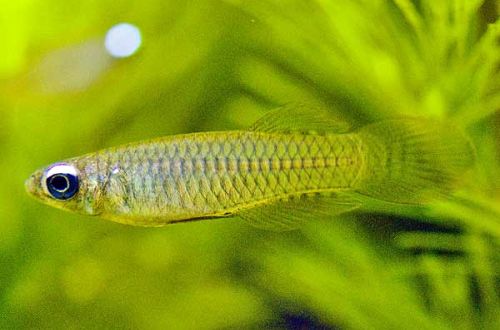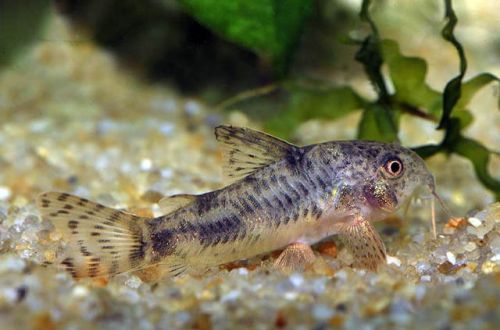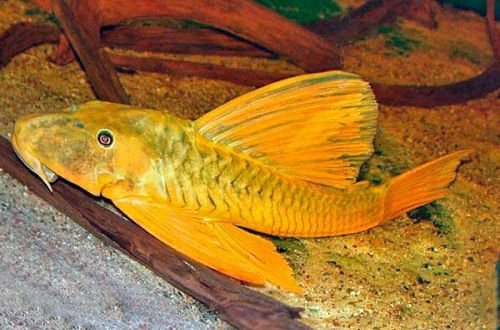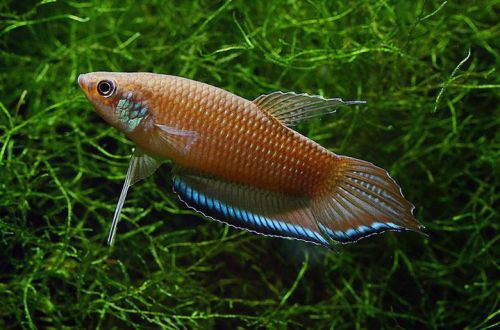
lampeye
The lampeye, scientific name Aplocheilichthys kingii, belongs to the Poeciliidae family. A small schooling fish, reaching a length of only 3 cm. A group of these little shining beauties creates a magnificent view, despite the fact that they are unattractive individually.

In English, the name of the fish sounds like “Lampeye Killifish”, indicating an unusual feature of the eyes. In their structure, a bright spot is noticeable, which, in good light, reflects light, creating the illusion of a glow, which, coupled with the iridescent reflection of the body, makes Lampeye a very attractive sight.
Habitat
This species is widely distributed in the water systems of Central Africa, on the territory of the modern states of Chad, Cameroon, Sudan, Nigeria. It lives in lakes, swamps, in shallow rivers, etc. They feed on insect larvae, invertebrates, and small crustaceans.
Description
A slender elongated body, the head is somewhat flattened from above, so the mouth is located quite high. The fins and tail are rounded, the dorsal fin is located towards the back. The color is muted from creamy to light brown, cast with an iridescent light. A characteristic feature of the species is the presence of a bright point on the upper part of the eye, which seems to glow in good light.
Food
Carnivorous species, small predators. At home, freeze-dried or live food should be served (daphnia, cyclops, brine shrimp). Finely chopped frozen foods (fish, shrimp, worms) are allowed.
Maintenance and care
Despite the modest size, the tank should not be less than 80 liters to meet the needs of swimming. Clean water is the most important condition for successful keeping, ensure good filtration and, if possible, replace part of the water (25-30%) every 4-5 days. The minimum required set of equipment, except for the filter, is as follows: heater, aerator, lighting system. A lid for the aquarium is recommended: from a sharp sound, impact, turning off / on, Light-Eyes can panic and accidentally jump out, fleeing from possible danger.
The dark substrate in the design favorably emphasizes the light color of the fish. Clusters of dense plant growths provide much-needed cover for such small creatures.
Social behavior
Flocking peace-loving species, the joint maintenance of at least 4 individuals is required. The more the better, get as many fish as possible for you. Compatible with other miniature fish. All large species pose a potential danger.
Breeding / breeding
Details of reproduction of this species in a home aquarium vary in different sources, so Lamp-Eyes cannot be recommended for beginners for breeding. In the wild, fish scatter their eggs on the substrate from thickets of thin-leaved plants. The fry emerge in 2-4 weeks, depending on environmental conditions, and require very clean water.
Diseases
In favorable conditions, problems are extremely rare, but due to high demands on water quality, the risk of an outbreak of the disease no longer seems so unlikely. First of all, these fish develop bacterial infections. Read more about symptoms and treatments in the Aquarium Fish Diseases section.





